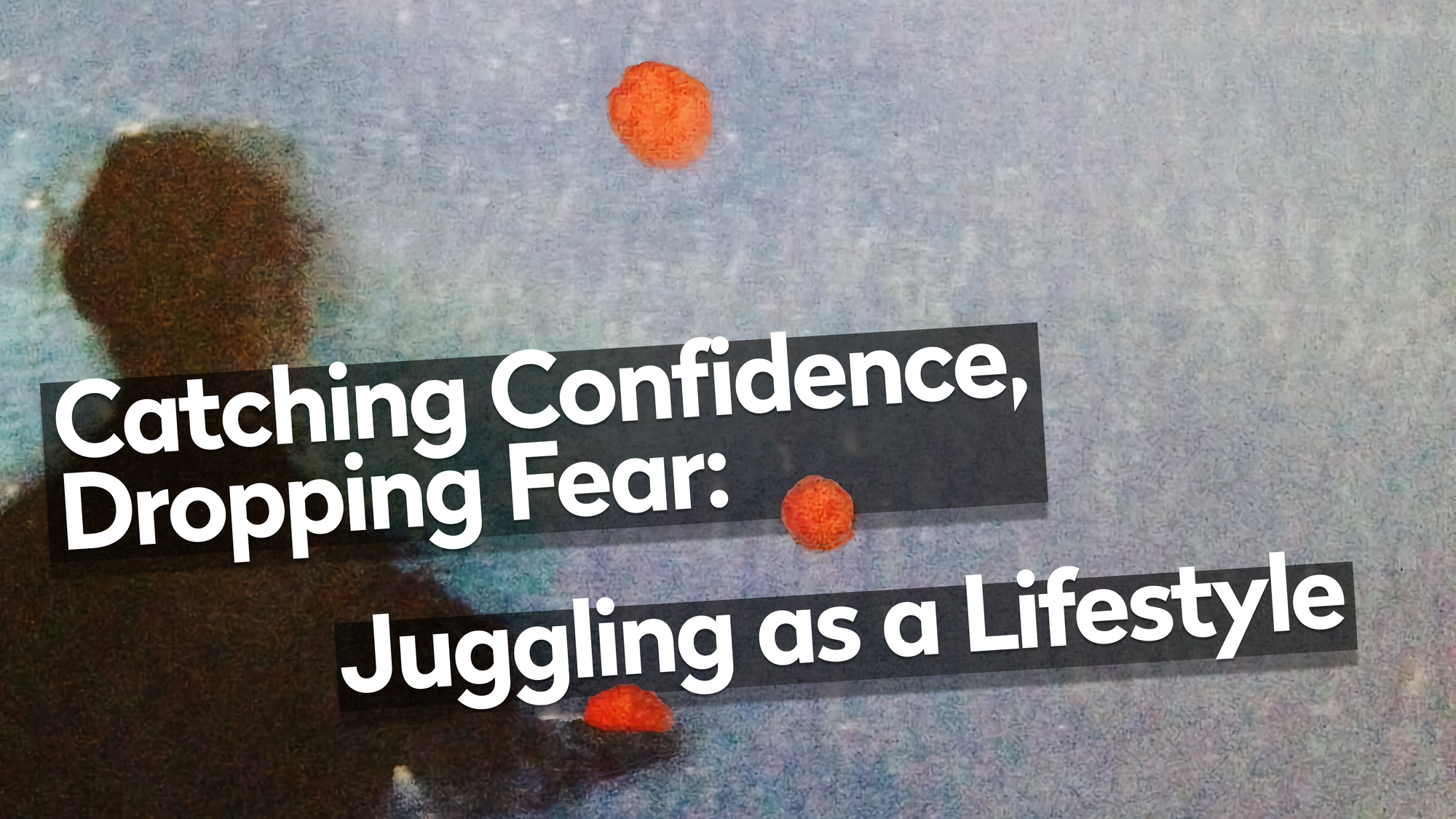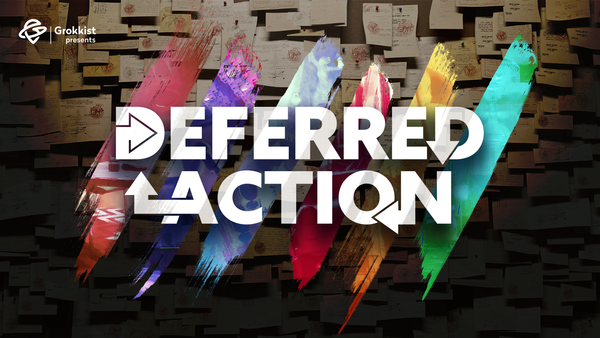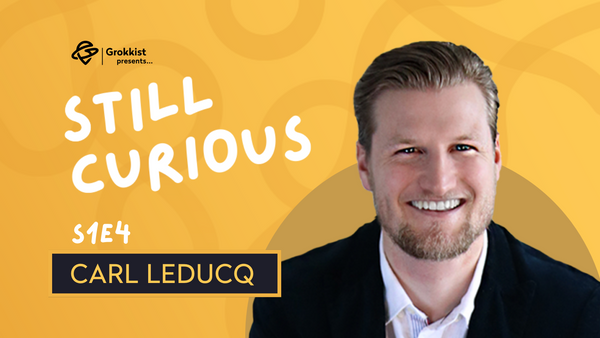Catching Confidence, Dropping Fear
Most people think of juggling as a party trick or a circus skill—something flashy but trivial. But the first time I caught three balls in a steady rhythm, I felt something unexpected: a quiet thrill of confidence.
Juggling didn’t just challenge my coordination; it asked me to drop my assumptions, to let go of the fear of looking silly, and to release the need for perfection.
For most people, the thought of learning to juggle can be intimidating. It’s easy to think, “I’ll never be able to do that.”
But every throw, every catch, and every inevitable drop teaches you something new. Juggling is playful, yes, but it’s also surprisingly powerful. It’s about finding a rhythm, letting go of fear, and learning to trust yourself.
For me, it became a kind of moving meditation – a way of juggling with life, coping with everything that the universe cares to throw at me.
For me, juggling became a kind of moving meditation—a practice that balances discipline with joy, resilience with lightness. Over the years, it’s transformed from a quirky hobby into a way of juggling with life, coping with everything that the universe cares to throw at me.
How juggling changed my life
I first learned to juggle in 1994, back when I was at university studying chemistry. I never thought I’d be any good at it. Growing up, I’d convinced myself that I was uncoordinated, not athletic, not the kind of person who’d ever pick up something like juggling.
But then, one day, I managed to keep three balls in the air. Just like that, the idea of who I thought I was fell away, and a whole new world opened up. I felt electrified.
That simple act of juggling changed everything. I was just over the moon that I’d achieved this seemingly impossible task, and I couldn’t wait to learn the next trick and play.
In that first year of University I spent hours practicing, alternating my studies with juggling. I found that the more I juggled, the more I felt my mind and body come alive, like something had clicked into place. I felt my brain swell and pulsate. It was an amazing feeling of activation and growth, of meeting and playing with new friends.
A few years later, while traveling, I found my yoga teacher in Rome. His approach was profound and non-dogmatic, and I started practicing yoga with the same passion I’d found in juggling. The two practices became intertwined for me, each one revealing something about the other. Juggling taught me patience, a way to laugh at my mistakes. Yoga gave me a sense of inner calm, a way to understand myself more deeply. Together, they became the foundation of how I approach life.

What juggling has taught me:
- That with patience we can learn anything we want;
- To let go of negative beliefs;
- To stay calm and carry on, even when the balls always end up all over the floor;
- To dream and visualise what we want;
- To concentrate without effort;
- That what goes up must come down!
Juggling, in my opinion, is a perfect analogy for coping with everything that the universe cares to throw at us.
And as I juggled, I found that each throw brought more than just skill—it brought a surprising sense of calm and clarity, revealing the deeper, meditative side of the practice.
Juggling as a practice of presence
Juggling... it's hard to define. Is it an art, a sport, a hobby? For me, it’s all of these and more—it’s a practice of pure presence.
For a lot of people, even the idea of learning to juggle is oddly scary. There’s a real hesitation about even trying it. In my experience, hardly anyone actually believes they’ll learn to juggle before they start. And maybe that says something about how we, as adults, think about play and having a go at new things.
Even the most outwardly confident people often have a secret worry: What if I can’t learn this? That’s what makes juggling so valuable—it brings up all these doubts and lets you meet them with patience and curiosity. You don’t just learn to juggle; you start to unlearn old limits. Each throw and each drop is a small invitation to let go of fear and have another go.
And it’s not just a mental shift. Juggling wakes up the whole body. It’s something different from our usual screen-heavy habits, pulling our attention into something real and lively. All you need are three balls, and suddenly you’re fully in it—alive, alert, and ready.
The mind-body connection
When you start juggling, something surprising happens. For many people, especially in the beginning, juggling brings a calm that sneaks up on you—a kind of meditative state where time and tiredness seem to disappear. You find yourself juggling for hours, hardly noticing the time passing.
Juggling brings a calm that sneaks up on you—a kind of meditative state where time and tiredness seem to disappear.
At first glance, juggling and yoga might seem worlds apart.
Yoga, with its poses and stillness, doesn’t exactly call to mind throwing objects in the air. But to me, these practices are closer than they seem. Both ask you to show up fully, to be here and now, and to let go of the usual noise in your head.
For me, juggling has always felt like a way to reset and reconnect. It brings you fully into the present moment. A couple of years after I first learned to juggle, I started practicing yoga every day. The similarities struck me right away. Both practices wake up the brain in unique ways, activating the cerebellum–what some call the “reptile brain”–and balancing both hemispheres. You feel this deeper connection in your whole system—mind, body, and focus, all working together.
If you were to observe your breath while learning to juggle, you’d probably notice that it had become quite shallow and erratic. If you were able to lengthen it and calm it down, you may find yourself undoing an old ‘startle’ pattern, one that we habitually take on in the face of difficulty.

For me, juggling has always felt like a way to reset, to reconnect. Just like yoga, it invites you to be fully present. In juggling, every throw and every catch pulls you into the moment. There’s no time to worry about yesterday or plan for tomorrow—you’re just here, now. The mind quiets down, and it’s as if the constant background noise simply fades away.
In juggling, every throw and every catch pulls you into the moment. There’s no time to worry about yesterday or plan for tomorrow—you’re just here, now.
The mind quiets down, and it’s as if the constant background noise simply fades away.
Whoever takes it up finds themselves drawn into powerful sensations, with almost no time to overthink. You’re simply there, immersed in harmony, a sense of presence, a joy you may have been unconsciously seeking all along.
Both practices share that spark—there’s something that draws you in, that makes you want to explore deeper. And as you go, juggling becomes more than just a skill. It becomes a practice that both frees grounds you, one that gives back every time you pick up the balls.
There’s also a pure, simple pleasure to it. Unlike so many other things we do, juggling isn’t about getting somewhere or proving something. It’s about enjoying the moment, about starting fresh each day and seeing what shows up. When your training sessions start to change how you live—and your life starts to shape your practice—that’s when juggling becomes a kind of art, a lifestyle, a way of being fully alive.
Having practised both Yoga and Juggling for more than 20 years, I can also see many similar traps between the two that might not be so obvious at first sight.
It’s easy to get caught up in collecting tricks, just as many people collect asanas. It’s very stimulating to learn more and more difficult exercises and poses, more complicated visualisations or Pranayamas, but sometimes it can take us out of the enjoyment of what we’re actually doing right now. It very subtly takes us out of the present.
The hunt for the ever more difficult is great and can be stimulating but it’s only a part of the story. We live in a very technical world, in a world where “doing” is much more important than being, and this comes out in our Yoga practice too. Quality versus quantity. Slowing down and listening helps with that.
Often we tend to compare ourselves with the skill and naturalness of others and this can make us feel like we’re not good enough and thoughts and feelings of jealously or “what’s the point?” may arise.
But the real joy of juggling is in finding your own flow, being fully engaged without needing to be perfect. Every throw, every catch, and every drop brings you back to this rhythm, inviting you to let go of judgment and just enjoy the experience.
Every time you drop a ball, you get the chance to let go of the idea of failure. You just pick it up and try again, learning to laugh at yourself, to drop the need for perfection. The beauty is, you’re free to make mistakes. No one’s keeping score. No one’s hurt. You just start over.
In the circus it’s the clown who has the most fun and who gets the best laughs.
Every time you drop a ball, you get the chance to let go of the idea of failure.
In the circus it’s the clown who has the most fun and who gets the best laughs.
In this way, juggling becomes a practice of trust and resilience. And before long, I found it wasn’t something I could keep to myself.
Juggling as connection and community
One of the most beautiful things about juggling is that it’s rarely a solitary activity for long. Juggling sparks a desire to connect and share. You can juggle on your own, in pairs, or in groups, and soon enough, you find yourself part of a community. People who juggle together naturally move from competition to collaboration, meeting as equals to learn and share.
There’s a natural camaraderie in juggling circles. People want to see you succeed, to share what they know, to throw a ball your way and invite you to join in. It’s a joyfully open community. There are friendly meet ups where jugglers share, hang out, and throw objects in the air and at each other.

In Europe, we have the European Juggling Convention, where thousands gather for a week-long jugglicious exchange. My wife came along with me once and couldn’t believe her eyes: so many passionate people, throwing, catching, rolling, swinging, smiling, and dancing – children, adults, and seniors all together.
Juggling connects us with that Inner Child, the part of us that’s curious, unafraid to try, and always ready to play. When you’re juggling, it’s hard to take yourself too seriously. You’re just there, in the moment, tossing things in the air, learning and laughing as you go.
Rediscovering play together
The process of learning to juggle can shine much light on what we think about ourselves and our general approach to learning as a whole.
Many of us have pretty negative inner monologues – “I’ll never get this” – or when the props don’t stay in the air – “I knew I couldn’t learn it” – while others have a more aggressive approach and become angry. So we miss the point.
But those who stick with it find that juggling has a way of getting the junk out of the way. It’s an invitation to drop the doubts and fill ourselves with a massive “YES” to trying again.
In juggling, you learn by doing, and that means you learn by making mistakes. It's all about being in the here and now and that means there is basically no time for bad thoughts.
And that’s part of what makes it so powerful. There’s no time to get stuck in your head or spiral into bad thoughts; you’re too busy keeping up with the rhythm, focused on each throw and catch. This helps us to slow down the incessant chattering of the mind and get out of obsessive habits.
There’s no time to get stuck in your head or spiral into bad thoughts; you’re too busy keeping up with the rhythm.
This helps us to slow down the incessant chattering of the mind and get out of obsessive habits.
Juggling is an incredibly complex activity that evokes a relaxed state of concentration. As you practice, your mind and body start working together differently. The brain becomes completely absorbed in the task at hand. This generates a sense of fun and achievement as we start to live less in our heads and more in a united mind and body. The brain becomes more elastic and we learn that old habits can be unlearned – jugglers constantly break old habits to learn new tricks.
Anxious people have something they can get to grips with and use to release tension, and the confidence that learning to juggle gives can help us snap out of a down period.
This said, juggling stimulates a rather dynamic energy and as jugglers we would do well to counterbalance it with some slower activities, in order to develop an ability to listen and feel. Otherwise we could risk becoming too tense, rigid and insensitive – all Yang and no Yin in Taoist terminology. We can integrate juggling with, for example, Yoga or Taijiquan to become more harmonious and even more aware of the benefits. This time taken to unwind and to ‘go within’ is especially helpful for the brain to elaborate and integrate the new data acquired in a juggling session.
Juggling is about balancing dynamic energy, both in the air and within ourselves. It’s a rhythm anyone can tap into—a practice that’s as much about connection and play as it is about skill. And it’s a joy I can’t help but want to share.

An invitation to play
So what are you waiting for? Pick up some balls and give it a try.
Juggling isn’t just for the outgoing types, the hyperactive, or the athletic; it’s for everyone—even the introverts, the thinkers, the ones who usually sit back and watch. You don’t have to be a performer to enjoy juggling. It’s a practice that meets you where you are, whether you’re looking for a playful escape, a chance to challenge yourself, or simply a way to be in the moment.
Let yourself fumble, drop it, and pick it up again. Juggling has a way of teaching you humility while giving you so much joy. It reminds you that life doesn’t have to be about getting everything right. Sometimes, it’s just about having a bit of fun, seeing what happens, and letting yourself be a beginner.
If you see a juggler somewhere, don’t be shy—ask them to show you a trick. Better yet, join a beginners’ group, where everyone’s learning and the energy is sky-high.
Observe your reaction before, during and after learning, and feel the happiness and satisfaction fill your whole being. And once you get that spark, you’ll find yourself wanting to share it, to pass it along, just as others have done before you.
Juggling can of course become mechanical with time, but there are so many ways to keep it fresh and alive. Try new variations, dance to music while you juggle, or try to teach someone else who’s curious.
So why not give it a go? Pick up a ball, drop it, pick it up again. Let yourself fumble, laugh, and enjoy the process of learning, just as I did.











Member discussion